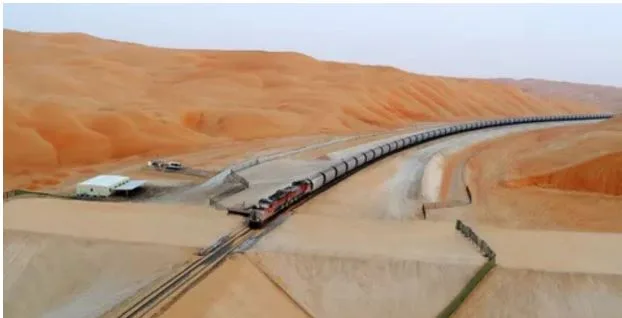Revolutionizing Filtration: Inside the Hollow Fiber Spinning Machine
Effective filtration today is no longer a luxury but a necessity. From sparkling drinking water to contemporary medical use, there has been an increased need for accurate and high-performance filtration techniques. The answer to them all is in one super-efficient machine called the hollow fiber spinning machine. It is the key to the manufacturing of high-quality membranes used in a wide range of industries ranging from water treatment, hemodialysis, to gas separation.
What is a Hollow Fiber Spinning Machine?
A hollow fiber spinning machine is a state-of-the-art machine for the manufacture of hollow fiber membranes. They are distinguished by their tiny, tube-like shape with an inside void that offers highly effective particle, gas, and liquid separation. They are critical elements in applications including dialysis, ultrafiltration, and reverse osmosis.
With repeated cycling of polymer material through precision spinnerets, the apparatus produces consistent-size fibers and profile, which is then hardened, washed, dried, and wound up before being included in filtration systems.
Working Stations and Equipment
Appreciation of the overall ability of the hollow fiber spinning machine starts with its very advanced design. A typical installation has many workstations, and each one is specially assigned to a specific step in the production of the membrane. These usually include:
- Cleaning of spinneret solvent tanks
- Core liquid tanks for the creation of the inner channel of the fiber
- DOPE tanks for preparation and storage of polymer solutions
- Control systems with HMI touchscreens
- Coagulation baths with temperature control
- A few washing baths with overflow regulation
- Drying baths consisting of anti-static materials
- Precise winding collection system of finishing fibers
It is a complex but organized system. It simplifies and makes efficient the production of membranes.
Advanced Designing and Regulation
The level of tailoring and control that is typical of modern machines differentiates them. This is in the sense that such variables as temperature, speed of spinning, and relative humidity can all be both monitored and regulated by operators through a relatively uncomplicated interface. The extent to which such types of operations are carried out by the machine reduces the level of manual observation required to the point that it can now be applied not only in working at the research level but even industrially.
The hollow fiber spinning machine has its standard operation with 32 spinneret heads and a rate of up to 25 meters per minute. It is such a high-capacity output machine yet one that can be operated by a single or two operators, something that is very representative of how simple it is to operate and effective.
Applications in Hemodialysis and Gas Separation
Hollow fiber membranes have revolutionized the environmental and medical markets. In hemodialysis, the membranes allow toxins to be removed from a patient’s blood while proteins that need to be preserved are also delivered. Highly controlled pore sizes and biocompatibility are key in ensuring treatment efficacy and safety.
For gas separation, the same technology is utilized for gas separation like oxygen, nitrogen, and carbon dioxide. The efficiency and reliability of membranes produced by a hollow fiber spinning machine make them ideal for such rigorous application.
Technical Specifications that Matter
All parts of the hollow fiber spinning device are precision manufactured. Stainless steel fabrication (usually SUS304) provides corrosion resistance and durability. Coagulation bathes and washing bathes with on-line observation for monitoring of the concentration of solvents such as DMAC are provided. This enables the equipment to automatically regulate overflow and provide optimum processing conditions.
The spinnerets themselves are constructed to extremely precise tolerances. The inner diameter of the needle, say, might be 200 micrometers, the whole outside diameter 400 nanometers. All of these minutiae details are what they are that bring about uniformity in thousands of fibers.
Environmental Considerations and Compliance
The manufacturing process should also look at its impact on the environment. Machines emit waste gases whenever used, particularly when they are drying. In order not to contaminate the air, these emissions must be treated and be eco-friendly.
Likewise, washing will produce 100 to 200 liters of wastewater every hour alone. Properly treated wastewater is the way to have the factory comply with national and local regulations. Spending money on proper drainage and filtration equipment is not a choice—it’s mandatory.
Maintenance and Longevity
Regular servicing is necessary in order to keep the hollow fiber spinning machine in optimal shape. Deep cleaning of tanks and drying units every month avoids buildup of deposits. System components like control unit, power supply, and pressure gauges are checked weekly to enable early identification of potential issues.
Repair work, issues faced, and repair procedures documented with precise precision can enhance equipment life by a significant margin. Regular maintenance of a machine ensures consistent membrane quality and eliminates chances of plant shutdown.
Why Lab-Scale Systems Are Gaining Attention
As industrial machinery sweeps across enormous manufacturing plants, laboratory-sized hollow fiber spinning machines are quickly gaining popularity in R&D environments. The small devices allow researchers to test through various materials, spin conditions, and membrane geometries without physical full-scale production lines.
They act as a bridge between scientific study and actual usage, offering valuable feedback, which could be enhanced later. The accuracy and the intensity of these machines render them sheer innovation equipment.
Installation and Operating Conditions
For smooth operation, the machine must be installed in a controlled temperature and humidity setting—preferably 18°C to 28°C and 45% to 65% humidity. There must also be an interface of continuous water supply, drainage, and compressed air (or nitrogen). Floor flatness and load capacity must also meet established requirements to hold the equipment weight and operation.
Altitude may influence performance as well. Units above 1,000 meters should be notified to the factory in order to make adjustments at the time of installation.
A Look Ahead: The Future of Membrane Technology
A hollow fiber spinning machine is not only a production device—it’s the driving force towards innovation in the area of filtration technology. When the demand for clean water, efficient medical treatment, and efficient gas processing rises, the demand for these machines will rise with it.
We can await development of new innovations in AI-powered monitoring systems, greater production capacities, and yet more optimal energy usage. Exactly one thing doesn’t change, and that is reliability and accuracy, both which the hollow fiber spinning machine continues to provide.
Whatever may be your calling – research, medicine, or industrial use – knowing about this technology makes you have a more defined path towards innovation and contribution.





